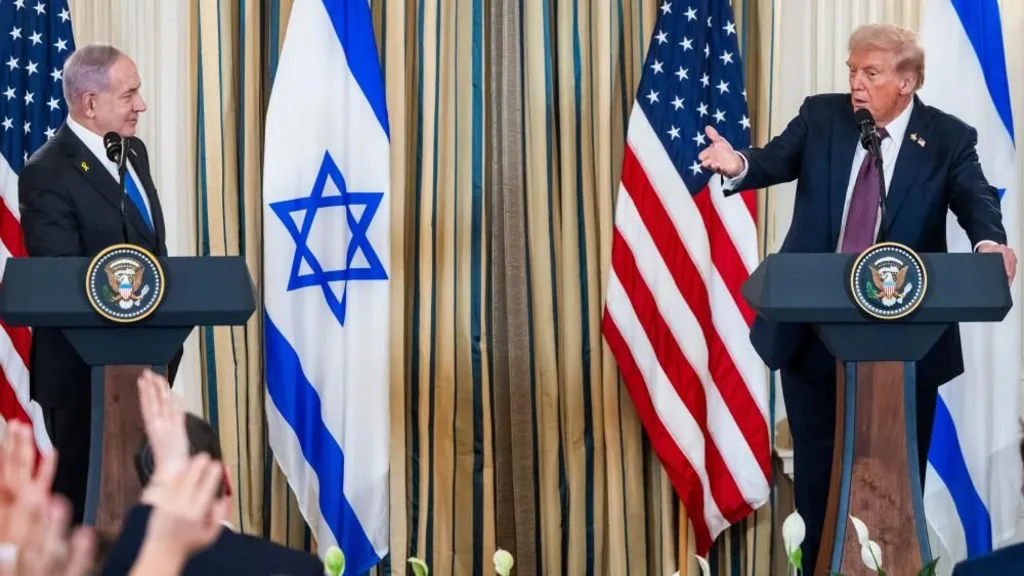Donald Trump’s 20-point Gaza peace plan calls for a ceasefire, hostage release, and Hamas disarmament. Talks in Egypt show signs of progress — but is it real peace or politics?
In the middle of endless violence and heartbreak in Gaza, a surprising face has once again stepped into the peace spotlight — Donald Trump. The former U.S. President, known for his bold and unpredictable diplomacy, has introduced a 20-point peace plan that he claims could finally bring an end to the war that has torn the region apart. His message is simple yet powerful — “The people of Gaza deserve peace, and the people of Israel deserve peace.”
Trump’s plan focuses on halting the violence immediately and creating space for negotiation rather than destruction. It calls for a ceasefire, exchange of hostages and prisoners, gradual disarmament of Hamas, and the establishment of a temporary Palestinian government under international supervision. He also wants the world to unite for the reconstruction of Gaza, a region that has seen unimaginable devastation in the past year.
Talks around the plan are already underway in Sharm el-Sheikh, Egypt, with representatives from Israel and Hamas engaging indirectly under the mediation of the U.S., Egypt, and Qatar. Trump recently said that the first phase — which includes the release of around 48 hostages in exchange for Palestinian prisoners — could be completed within the week. If that happens, it would be the first real progress since the war reignited in 2024.
While Trump presents himself as a peace broker, his plan hasn’t come without controversy. Israeli Prime Minister Benjamin Netanyahu is under growing political pressure from far-right members of his coalition who oppose any deal that limits Israel’s military actions or allows remnants of Hamas to survive. This tension has sparked debate inside Israel, with some officials privately admitting that the war has reached a military dead end and diplomacy may now be the only realistic option.
Trump’s tone has been both firm and emotional. He has publicly urged Israel to “stop bombing Gaza immediately” to enable humanitarian aid and hostage releases. At the same time, he has warned Hamas that refusal to cooperate could lead to their “complete obliteration.” This mix of empathy and threat reflects his trademark political style — direct, forceful, and deeply polarizing.
Across the world, reactions to Trump’s Gaza initiative have been mixed. Arab nations like Egypt and Qatar have welcomed his involvement, hoping it might bring some relief to civilians trapped in the conflict. European diplomats remain cautious, questioning whether Trump’s unpredictable leadership can deliver lasting stability. Meanwhile, humanitarian organizations have urged all sides to focus on protecting innocent lives rather than political interests.
For the people on the ground — families displaced, children orphaned, cities in ruins — even a few days of peace would feel like a miracle. After months of bombings and fear, Trump’s 20-point plan has at least reopened a door that many thought was permanently shut. Whether it becomes a true turning point or fades as another political performance will depend entirely on how much trust both sides can show in the coming days.
In a region where every attempt at peace has been crushed by history, Trump’s move is both bold and risky. It’s a reminder that diplomacy, no matter who leads it, is never about perfection — it’s about possibility. The world now waits, holding its breath, hoping that this time the word “peace” won’t disappear in the smoke of another missile.

